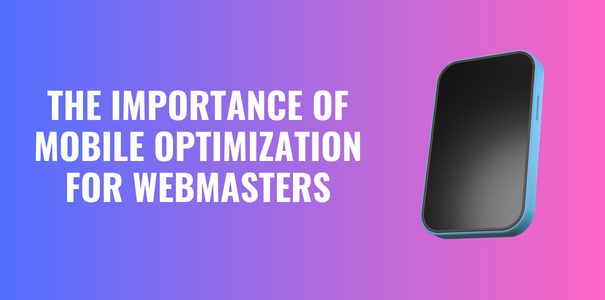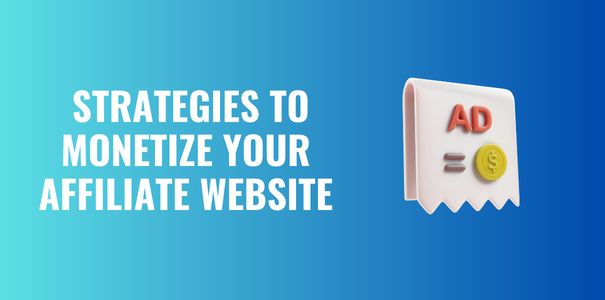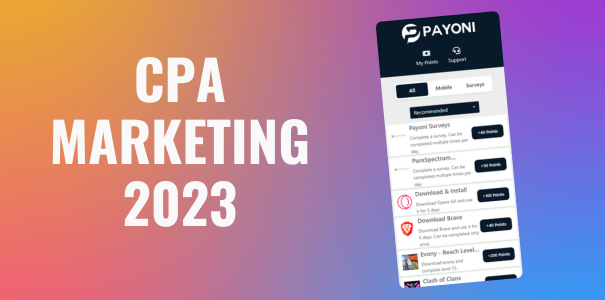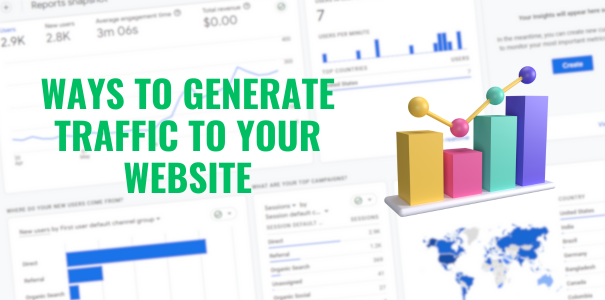
Affiliate Marketing Glossary: All Terms To Know
Affiliate Marketing・9 min read
Affiliate marketing is a great way to earn money online. It’s a performance-based marketing strategy in which a business rewards one or more affiliates for each customer brought about by the affiliate’s own marketing efforts. Affiliate marketing is a type of performance-based marketing in which a business rewards one or more affiliates for each visitor or customer brought by the affiliate’s own marketing efforts. Affiliates can be individuals or companies that market a company’s products for a commission. Affiliate marketing is a popular way to earn money online, and many companies offer affiliate programs.
There are a few key terms you should know before getting started with affiliate marketing.
A/B Testing (Split testing)
This is a method of testing two or more versions of a web page or email to see which one performs better. A/B testing can be used to test different headlines, images, call to action buttons, and more.
Above the Fold
This term refers to the portion of a web page that is visible without scrolling. The “fold” is the point at which a user would have to scroll down to see more content.
Ad Tools
Ad tools are software programs that help affiliates create and manage their ads. Ad tools can be used to create text, image, and video ads.
Ad Network
An ad network is a company that connects advertisers with websites that agree to display their ads. Ad networks make it easier for advertisers to place their ads on websites and track the performance of their ads.
Advertiser
An advertiser is a company or individual that creates and places ads on websites. Advertisers use ad networks to place their ads on websites.
Affiliate
An affiliate is an individual or company that promotes a company’s products or services in exchange for a commission. Affiliates use various marketing techniques to drive traffic to the advertiser’s website, such as creating a blog post or creating a YouTube video.
Affiliate Agreement
An affiliate agreement is a contract between an affiliate and an advertiser. The affiliate agreement spells out the terms of the relationship, such as the commission percentage, ad requirements, and payment terms.
Affiliate Link
An affiliate link is a special URL that contains the affiliate’s ID. When a customer clicks on an affiliate link, the affiliate ID is tracked so the affiliate can be paid a commission.
Affiliate Manager
An affiliate manager is a person who manages an affiliate program. The affiliate manager is responsible for recruiting affiliates, communicating with affiliates, and providing affiliates with marketing materials.
Affiliate Program
An affiliate program is a marketing program that compensates affiliates for driving traffic to a company’s website. Affiliate programs use affiliate links to track the traffic that affiliates drive to the advertiser’s website.
Affiliate Software
Affiliate software is a type of software that helps affiliates manage their affiliate program. Affiliate software can be used to recruit affiliates, track affiliate sales, and provide affiliates with marketing materials.
Affiliate Tracking (Tracking URL)
Affiliate tracking is the process of tracking affiliate sales. Affiliate tracking typically uses a tracking URL, which is a special URL that contains the affiliate’s ID. When a customer clicks on a tracking URL, the affiliate ID is tracked so the affiliate can be paid a commission.
API
An API is a set of programming instructions that allow two pieces of software to communicate with each other. In affiliate marketing, an API allows an affiliate network to communicate with a merchant’s website.
Backlink
A backlink is a link from one website to another. Backlinks are an important ranking factor for search engines, and can also help bring traffic to your website.
Banner Ad
A banner ad is a type of online advertising that uses a graphical image, usually in the form of a banner, to promote a product or service.
Bid
In online advertising, a bid is the amount of money an advertiser is willing to pay per click for their ad.
Billing
Billing is the process of sending invoices to advertisers and collecting payments from them.
Black Hat SEO
Black hat SEO is a type of SEO that uses unethical methods to try to game the search engine algorithms. These methods can result in a website being banned from the search engines.
Browser
A browser is a software program that allows you to access the internet and view web pages.
Capping
Capping is the limit on the number of times an ad can be shown to a particular user.
Chargeback
A chargeback is a transaction that is reversed due to fraud or disputed by the cardholder.
Cloaking
Cloaking is a black hat SEO technique that involves showing different content to search engines than what is shown to users. This is done in an attempt to game the search engine algorithms.
Co-branding
Co-branding is a marketing strategy that involves two or more brands working together to create a joint product or service.
Commission
A commission is a fee that is paid to an affiliate for each sale or lead they generate.
Contextual Advertising
This is a type of advertising that shows ads based on the content of the website or app where they are shown. For example, if you are reading an article about puppies, you might see an ad for a local pet store.
Conversion Rate
This is the percentage of people who take the desired action on your website or app, such as making a purchase or signing up for a newsletter. A high conversion rate is what you want to aim for.
Cookie
In the context of affiliate marketing, a cookie is a small piece of data that is placed on a visitor’s computer when they click on an affiliate link. This cookie is used to track the visitor’s activity and whether they make a purchase.
CPA / RPA
CPA stands for “cost per action” and RPA stands for “revenue per action.” These are both types of affiliate commissions. With CPA, the affiliate is paid a commission for each action taken, such as a sale or a click. With RPA, the affiliate is paid a commission based on a percentage of the revenue generated from the action.
CPC
CPC stands for “cost per click.” This is a type of affiliate commission where the affiliate is paid each time a visitor clicks on an affiliate link.
CPI
CPI stands for “cost per impression.” This is a type of affiliate commission where the affiliate is paid each time an ad is shown.
CPM / RPM
CPM stands for “cost per thousand impressions” and RPM stands for “revenue per thousand impressions.” These are both types of affiliate commissions. With CPM, the affiliate is paid a commission for each 1,000 views of an ad. With RPM, the affiliate is paid a commission based on a percentage of the revenue generated from the ad views.
Creative
This is a general term for the content that an affiliate uses to promote a merchant’s products, such as banners, text links, or product images.
CTR
CTR stands for “click-through rate.” This is the percentage of people who click on an ad or affiliate link out of the total number of people who see the ad or link. A high CTR is what you want to aim for.
Deep linking
This is a type of affiliate link that takes the visitor to a specific page on the merchant’s website, rather than the home page. Deep linking is often used to promote specific products or pages.
Direct Linking / Direct to Form
This is a type of affiliate link that goes directly to a form, such as a sign-up form or a purchase form. Direct linking can be used to increase conversion rates.
Domain
A domain is the address of a website. For example, the domain of this website is “AffiliateMarketingGlossary.com.”
Double Opt-In (DOI)
Double opt-in is a type of email sign-up process where the person signing up must confirm their email address by clicking on a link in a confirmation email. This helps to ensure that only people who are interested in receiving emails from the company are on the email list.
eCPM
This stands for effective cost per thousand impressions, and is a performance metric used to calculate the effectiveness of an ad or affiliate campaign.
EPC
This stands for earnings per click, and is a performance metric used to calculate the average amount of money earned for each click on an affiliate link.
Flat rate
This is a commission structure in which an affiliate earns a set amount of money for each sale they generate, regardless of the product price.
Geo-targeting
This is the process of tailoring ads and content to a specific geographic location.
Global Postbacks
This is a feature of some affiliate networks that allows affiliates to track conversions from all over the world in one place.
Gross Click
This is the total number of clicks on an affiliate link, before any deductions are made for refunds or cancellations.
Impression
This is a metric used to measure the number of times an ad is seen, or an affiliate link is clicked.
In-house
This refers to a company that manages its own affiliate program, rather than using an affiliate network.
Landing page
This is the page on a website that a visitor is taken to after clicking on an ad or affiliate link.
Lead Scrubbing
This is the process of removing invalid or duplicate leads from an affiliate campaign.
Media Buying
This is the process of purchasing advertising space on websites, in order to promote a product or service.
Merchant
This is a company that sells products or services through an affiliate program.
Multi-CPA
This is a commission structure in which an affiliate earns a percentage of the sale price for each sale they generate, regardless of the product price.
Multiple Tiers
This means that companies offer different levels of commission to affiliates, based on how much business they bring in. For example, a company might offer a 5% commission to affiliates who bring in up to $5,000 per month, and a 10% commission to affiliates who bring in more than $5,000 per month.
Niche
This refers to a market segment that has been carefully defined. For example, the “weight loss” niche is a very specific segment of the health market.
Offer
This is a specific product or service that is being promoted by an affiliate.
Pay-Per-Lead (PPL)
With this model, affiliates are paid a commission for each lead they generate. A lead is usually defined as a customer who provides their contact information, such as an email address or phone number.
Pay-Per-Sale (PPS)
With this model, affiliates are paid a commission for each sale they generate. A sale is usually defined as a customer who purchases a product or service.
Performance-Based Marketing
This is a type of marketing where affiliates are only paid if they generate results, such as sales or leads.
Postback
This is a technical term that refers to the process of tracking conversions. A “conversion” is a goal that an affiliate is trying to accomplish, such as a sale or a lead.
PPC / RPC
PPC stands for “pay-per-click.” With this model, affiliates are paid a commission for each click they generate. RPC stands for “revenue per click.” With this model, affiliates are paid a commission based on the revenue generated from each click.
Prelander
A prelander is a type of landing page that is used to promote an offer.
Revshare, RPS, and RS
These all refer to the same thing: a type of commission structure where affiliates are paid a percentage of the revenue generated by their referrals.
ROI
ROI stands for “return on investment.” It is a metric that is used to measure the profitability of an investment.
RON
RON stands for “run of network.” It is a type of advertising that is displayed on a network of websites.
Search Robots
Search robots, also known as “spiders” or “crawlers,” are programs that browse the internet and index web pages for search engines.
Segment
A segment is a sub-niche of a larger niche. For example, the “weight loss” niche can be segmented into the “low-carb diet” and “high-protein diet” sub-niches.
SEO
SEO stands for “search engine optimization.” It is the process of optimizing a website for the purpose of ranking higher in search engine results pages.
SERP
SERP stands for “search engine results page.” It is the page that a search engine displays after a user enters a query.
Single Opt-in (SOI)
SOI refers to a type of lead that is generated when a customer provides their contact information, such as an email address or phone number.
Smartlink
This is an automated system that affiliate networks use to optimize conversions by sending traffic to the best performing offers.
Spot
This is a specific offer or product that an affiliate promotes.
Targeting
This is the process of finding the best audience for an offer or product.
Tracker (Sub ID)
This is a unique ID that is used to track an affiliate’s performance.
Unique
This is a term used to describe an affiliate who the only one is promoting a particular offer.
Vertical
This is a term used to describe a particular type of offer or product.
White Hat SEO
This is a term used to describe SEO tactics that comply with search engine guidelines.
White Label
This is a term used to describe a product that is rebranded and sold by another company.



